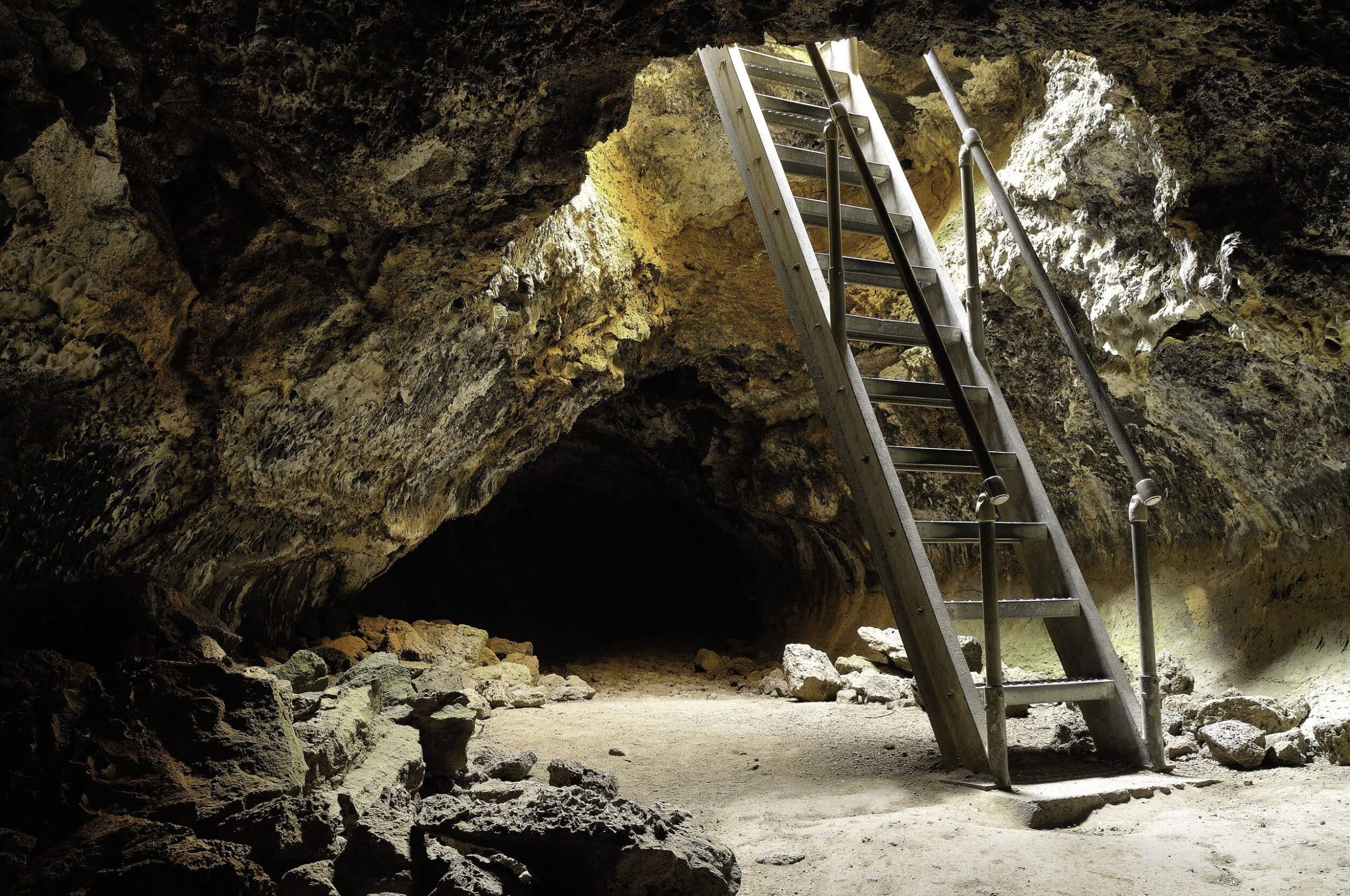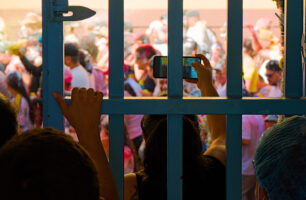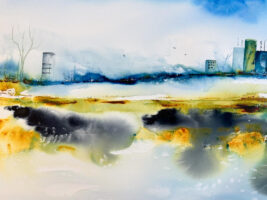Support Hidden Compass
Our articles are crafted by humans (not generative AI). Support Team Human with a contribution!
The dry landscape populated with low scrub and distant cinder cones rolled for miles in every direction. The sun beat down from a cloudless sky, but I left my jacket on; once inside the cave, the temperature would be chilly.
Looking down the ladder leading through a narrow opening in the earth, I wondered if I should have brought a helmet. As if to confirm, a sign nearby rendered a pictorial warning — a body with pain sparks shooting back from where it (presumably) whacked its head against the cave opening. I wasn’t about to turn back though. Curiosity had already wrapped itself tightly around my brain and sent my imagination galloping. Whether formed through a hot and fast lava flow or through the seepage of water eroding rock and mineral over millennia, caves are Earth’s hidden treasures; pathways to her secrets. With an extensive system of over 800 lava tube caves (around 20 of which — 33 miles’ worth — were open for exploring), Lava Beds National Monument was my portal to those subterranean mysteries.
~~
The sunlight pouring from the mouth of the cave pooled around the base of the ladder. A few feet beyond and the walls dissolved into an inky void. I switched on my flashlight, but the beam did little to push back the darkness. The air was cold and smelled of damp inertia; of molten, primordial energy long ago absorbed and stabilized.

Sunlight pours through the entrance of Golden Dome Cave at Lava Beds National Monument in Northern California. PHOTO: JEFF OLSHAN
My stomach tensed. If the batteries died, that would be it. Stuck. Underground. I clicked the flashlight on and off a bit, delighting in the slight panic that prickled in my gut every time the darkness rushed up around me. Like pushing a bruise even when you know it will hurt, there’s a sort of satisfaction in the confirmation. The utter, consuming dark of the cave was frightening. There was something ancient about that fear. And I liked poking it.
With the flashlight boring a weak tunnel of light along the passageway, I headed deeper into the cave, boots crunching over the coarse tongue of a lava flow. My stomach continued to flip in twisted exhilaration with each spur and branching pathway. The narrower the walls, the lower the ceiling, the bolder I grew. Frog squatting through shallow passes, scrabbling over boulders—I was an explorer marching intrepidly through earth’s labyrinthine maw.
I’d been hiking the cave for about twenty minutes when I arrived at a cutback I felt certain I’d already come across. The adrenaline that had been swishing silvery light through my veins not moments ago abruptly curdled with dread. I recalled a nature show I had seen with a segment on cave diving. As the divers glided through navy waters cut with jagged stalactites and stalagmites, they marked their path with a long string tethered to their vessel far above. I remembered commenting on how terrifying it would be for the divers if the string were to become detached. Disorientation… decreased oxygen… engulfing paralysis…
I held my breath, trying to quell the mushrooming panic. What the hell was I thinking running around underground so carelessly? A weak flashlight. No bread crumb tether. What if I kept circling the cave, unable to find my way out? Lost. Underground. It struck me that what was so unnerving about the cave was that it didn’t feel of this earth. Inside the cave the sun didn’t rise or set. The temperature varied little season to season. It had no time, no rhythms. I was an intruder here. The fear I’d been prodding earlier turned on me, cackling wickedly.
It was at this moment in my rapid descent into swirling, sludgy, claustrophobic despair that I began to hear voices floating through the passage. Behind the voices, specks of light bobbed into view along the darkness. A family of four in matching headlamps appeared down the tunnel waving chipper hellos as they approached.
The tangle of anxiety binding my chest instantly dissolved. Embarrassment rushed in to fill the void. The kids in that family couldn’t have been more than 10 years old. They weren’t scared or panicked, and these weren’t uncharted caves. This was a national monument complete with visitor center, patrolling rangers, and, the mark of all landscapes conquered by man, flushing toilets.
A bit bruised and pink-faced but certainly not extinguished, my inner explorer gave a rallying cry and pushed onward. Within a few yards the ceiling dipped dramatically. I duck-walked through, stumbling and pitching forward every few steps against the prickly froth of cauliflower lava flow beneath my feet. As I progressed, my flashlight danced herky-jerky against the walls of the wide cavern beyond the passage. Beneath the light, a dazzling iridescence rippled across the cave. With a gasp and an awkward attempt at speed duck-walking, I reached the cave’s namesake, Golden Dome — a wide cavern that sparkled and glittered against the dim beam of my flashlight. A ranger had suggested the cave for this very feature, explaining that the shimmering gold quality was the result of water droplets that form atop hydrophobic bacteria.
Standing amidst the glimmering reflection of that geologic magic, I felt ridiculously giddy. I had passed through a crack in the earth and journeyed to one of its hidden, sublunary reliquaries: a vestige of the combustible liquid rock that gave it shape, a pocket of purified, gilded dynamism.
But beyond the flashlight’s glow, shadows continued to creep and slither, pressing against the edges. My fear was poking me back. I switched off the light, allowing it to flood back in. Doused in darkness, anxiety again began to simmer in the corners of my gut.
And I welcomed it. It ignited the cave’s radiance in a way the light never could.
Alison Konecki
Alison Konecki crusades for the arts by day, writes by night, and travels as often as possible.



